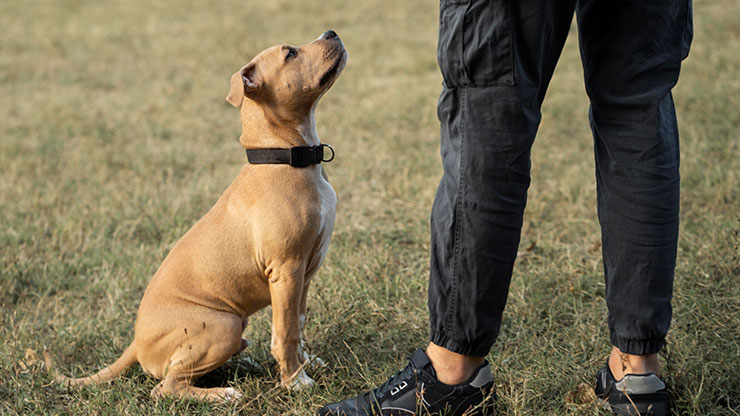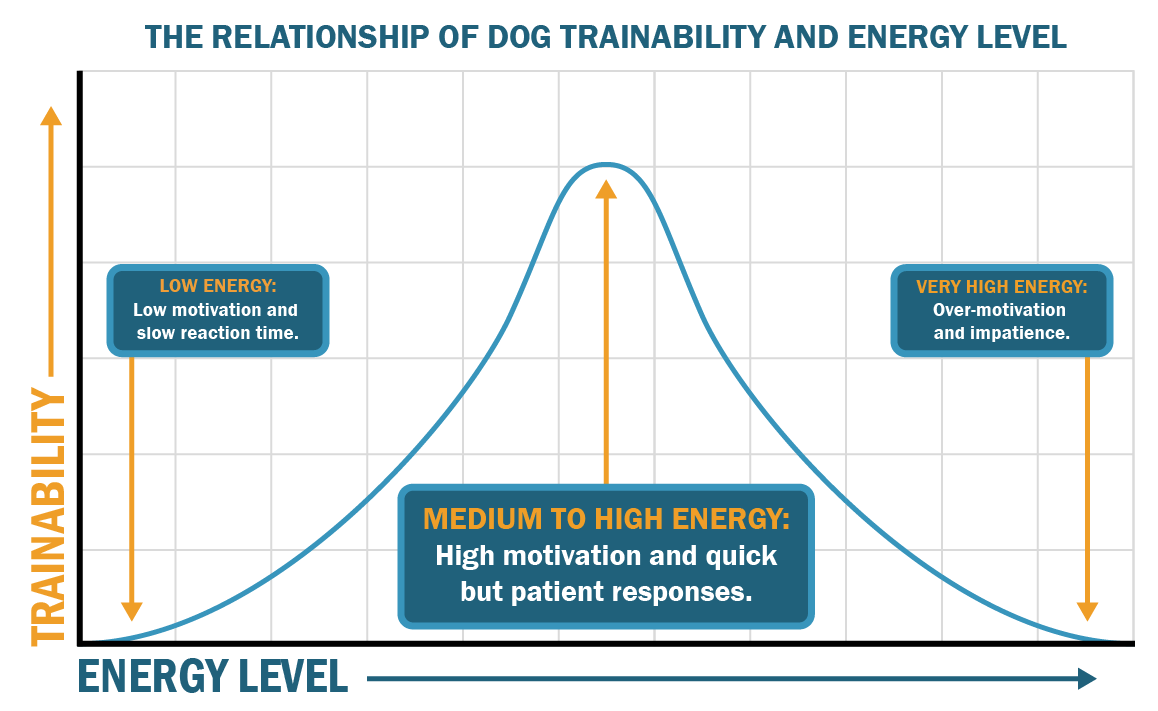
Hard to Train Dog? It May Be Their Energy Level!
Dogs come in a wide range of activity levels. Some are hyperactive, some are laid back, and many fall somewhere in between. Having been developed for different purposes, each dog breed has its own average level of activity. Is your dog more laid back or energetic? Keep reading to find out more about how your dog's breed and energy level play a role in trainability.
Energy Levels
Livestock guardian dogs are more laid back since they were developed to stay with whichever flock or herd they guard. Gun dogs, on the other hand, were initially developed to search, retrieve, flush, and swim without tiring. Because their energy needs are high, their activity level can seem boundless. Interestingly enough, any dog trainer experienced with these two breeds will tell you that there is a vast difference between their trainability. Gun dogs eagerly and readily learn while livestock guardian dogs can be a little more independent-minded about what will and will not be learned. So what gives? Why the discrepancy in training between dogs?

Studies and Findings
Research has found that it may not be a difference in breed or breed type that is the critical factor in determining how easily trained a dog is. Instead, a dog’s energy level may determine how trainable that dog may be. Professor emeritus and general dog expert Dr. Stanley Coren, Ph.d. decided to take a closer look into the relationship between energy level and trainability, and he has come up with some surprising and interesting results. He has concluded that “energy level does affect trainability and that energy and activity levels are related to dog intelligence and trainability. Energy too low, or too high, impairs performance.”
In his investigation, Dr. Coren reviewed research performed and compiled by over ninety-six dog experts for his book, “Why Does My Dog Act That Way?” The research assessed the personality and behavior of one hundred and thirty-three dog breeds, which ranked the different breeds into five behavioral categories, including energy level and trainability. The dog breeds were compared to one another, with special attention paid to training and energy level. The results showed a significant relationship between a dog’s energy level and training ability!
Coren determined that dogs on the lower end of the energy scale were less motivated to “experiment” with behaviors and tested them out to figure out what the trainer was trying to get them to do. Not only were they less motivated to offer behaviors, but they were also slower in their responses to training cues. On the opposite end of the research, dogs with extremely high energy levels were also difficult to train. They reacted impatiently and missed training prompts and commands necessary for them to learn. However, somewhere in the middle was the “sweet spot” level of energy and trainability. This was the area where the dog’s energy level was high enough to be motivated by praise and rewards but still allowed them to focus.
When plugged into a graph, the results formed a bell curve. Dogs located at the lower and higher ends of the energy level spectrum, or the outer ends, scored lower on trainability. Dogs in the middle range of the continuum boasted the highest number of above-average scores for trainability.

Of the dogs on the lower end of the energy scale or those further to the left side of the scale, only 29% scored above average on trainability. Peak performance was found at the medium to high range of the energy scale (toward the middle point), where a staggering 50-75% of dogs scored above average for trainability. Then, at the highest end of the energy scale, to the far right, only 47% of dogs scored above average for trainability, with the numbers steadily falling off the higher the energy level climbed.
How To Help With Training
This is great information to know when trying to troubleshoot training problems or considering an activity that would be a good fit for a dog. If a dog is low-energy, slower-paced activities such as tracking and article search may be a better fit than the faster-paced sport of dog agility. Likewise, a fast-paced sport such as flyball might be better if a dog is more energetic than if it attempted therapy work. It’s all about setting a dog up for success by working within a dog’s natural levels of energy.
So what if you have one of the dogs on either end of the spectrum? Maybe your dog is not showing a lot of enthusiasm during training because they are lower-energy. Or perhaps your dog is a bit too high-energy, and you need to work on helping them to focus it. Do these numbers mean that these dogs on either end of the continuum are doomed? Not at all. Dog trainers encounter this issue quite often, and there are two ways that it can be approached.

As previously mentioned, you can work with your dog’s energy level and find activities that are a good fit, or you can work opposite your dog’s energy level and try to modify it. If you have a lower-energy dog, you can work with them to determine what gets them excited and use that to motivate them when training.
Likewise, if you have a dog that is a little (or a lot) on the energetic side, you could ignore the high-energy behaviors and reward the lower-energy behaviors. For example, if the dog remains lying calmly when you return to a room instead of jumping at you, reward that good behavior! Bring out the calm behavior you want to see by rewarding it every chance. In addition, when working opposite your dog’s energy level, your energy level should also be opposite of theirs. If your dog is being energetic, you need to remain calm and patient; otherwise, it will only fuel your dog’s energetic fire if you respond excitedly or agitatedly. On the other hand, if your dog is lower energy, you must step it up several notches and be the excited, motivating force for both of you. You have to get him happy and excited.
It’s worth mentioning that it’s always easier to work with your dog’s energy level than against it. And you can only modify a dog’s natural energy level to a certain extent. It’s doubtful you’ll make an agility champion out of the Basset Hound/Couch Potato Extraordinaire. But this dog might make a fine Search and Rescue dog. Search and Rescue are slower-paced and would play heavily into a hound’s natural scenting instincts.
What About Your Dog?
Where does your dog lie on the energy continuum, and how does that affect your training? What is your dog’s breed or breed mix, and how does it affect their energy level? What training difficulties have you encountered that could be attributed to their energy level? We want to hear from you!
Sources:
Coren, S. (2006). Why does my dog act that way? A complete guide to your dog’s personality. New York: Free Press.
Ferster CB, Skinner BF (1957). Schedules of Reinforcement. New York: Appleton-Century-Crofts. ISBN 0-13-792309-0.
Yerkes RM, Dodson JD (1908). "The relation of strength of stimulus to rapidity of habit-formation." Journal of Comparative Neurology and Psychology. 18 (5): 459–482. doi:10.1002/cne.920180503










